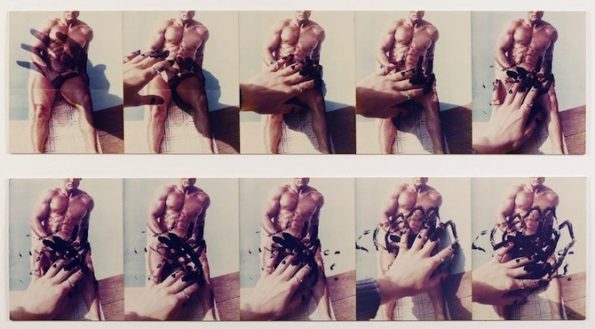Search
To search for an exact match, type the word or phrase you want in quotation marks.
A*DESK has been offering since 2002 contents about criticism and contemporary art. A*DESK has become consolidated thanks to all those who have believed in the project, all those who have followed us, debating, participating and collaborating. Many people have collaborated with A*DESK, and continue to do so. Their efforts, knowledge and belief in the project are what make it grow internationally. At A*DESK we have also generated work for over one hundred professionals in culture, from small collaborations with reviews and classes, to more prolonged and intense collaborations.
At A*DESK we believe in the need for free and universal access to culture and knowledge. We want to carry on being independent, remaining open to more ideas and opinions. If you believe in A*DESK, we need your backing to be able to continue. You can now participate in the project by supporting it. You can choose how much you want to contribute to the project.
You can decide how much you want to bring to the project.

The Feminist Avant-garde in the 70s, a selection of works from the Sammlung Verbund collection of feminist photography, in Vienna, can be seen until 1 September, within the programme of Photoespaña 2013.
In the show there are works by twenty artists from different geographies, all produced in the decade of the seventies, during the boom of the second wave of feminism. The artists represented develop an activist gaze, to the extent that they explore the possibilities for representing the body and female identity beyond the violent canon imposed in classical photography by the masculine gaze. Carol Hanisch’s slogan, The personal is political, that became popular as a result of her protest against Miss America 1968, knew how to call on the need for a change in the rhetoric and body-language that governed feminine identities. Amidst an avant-garde scenario, in which the masculinity of minimal sculptors or the Kantian rigidity of conceptual artists were the norm, those who called themselves feminists incorporated the vindications of the movement within the possibilities for representation permitted by the photographic medium, opening the doors to the appearance of other bodies.
It’s true that the images to which many of these pieces refer already form part of our imaginary but it is precisely for this that the show ends up being so necessary. And I say necessary because a return to the classics has to occur with relative regularity in order for us to look at them once again and ask questions. In this case, alongside the portraits by Ana Mendieta in the series Untitled (Glass on Body Imprints), from 1972, we have Selbst, from 1975, a work by the German Annegret Soltau; both of which enforce an exploration of the limits of the face. On the other hand, Rita Meyers and Martha Rosler deal with the submission of the body to geometrical dissection, in their respective works Body Halves, from 1971,and Semiotics of the Kitchen, from 1975. Alexis Hunter and Esther Ferrer shift the centre of attention towards the eye, with the aim of relativizing its power to define through the lens. More classics, such as Sherman, Woodman, and Export. Despite all this, my favourites are: Inaugurazzione a la Galleria Tommaseo from 1977, by Sanja Ivekovic and Approach to Fear (Voyeurism) from 1973, by Alexis Hunter. The first, a member of the Croat movement, new art practice, proposes a type of relation with the gallery’s public based on listening to the heartbeats that she recorded on each of her encounters, placing them the next day alongside an image of her with each visitor. In the second, the New Zealander proposes one of the more plastic approaches in the show, with a series of photographic stills from a particular striptease with hand painted interventions. Each and every one of them constitute an insertion of corporal knowledge into the arid desert of photographic objectivity. A contribution that transcends the limits of feminism in the strictest sense which, without a doubt, has repercussions on the different non-optical gazes established in the latter third of the 20th century.
One asks oneself how pertinent this show is today. Aside from whether the problems that these artists indicate have been resolved or not, the very fact that the doubt arises is perhaps a sign of its significance, as it refers to the same debate about the disintegration of the canon within the medium. Strategically, perhaps, there are works by Zbigniew Dlubak, Harry Calahan and Edward Weston in other spaces in the same building. All great exhibitions of classics in photography with which it is possible to weave successively, in and out, from norm to deviation.

Paloma Checa-Gismero is Assistant Professor at San Diego State University and Candidate to Ph.D. in Art History, Criticism and Theory at the University of California San Diego. A historian of universal and Latin American contemporary art, she studies the encounters between local aesthetics and global standards. Recent academic publications include ‘Realism in the Work of Maria Thereza Alves’, Afterall, autumn/winter 2017, and ‘Global Contemporary Art Tourism: Engaging with Cuban Authenticity Through the Bienal de La Habana’, in Tourism Planning & Development, vol. 15, 3, 2017. Since 2014 Paloma is a member of the editorial collective of FIELD journal.
"A desk is a dangerous place from which to watch the world" (John Le Carré)